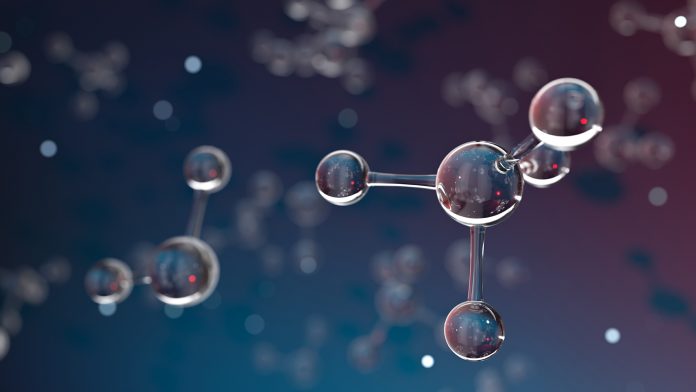Innovation News Network explores the work of Dr Anna Schenk, from the University of Bayreuth’s Colloidal Systems group, and discusses the group’s role in developing bio-inspired synthetic materials.
Junior professor Dr Anna Schenk leads the University of Bayreuth’s Colloidal Systems group, which focuses its research activities on the development of bio-inspired synthetic routes toward functional materials, in particular transition metal oxides.
The group’s research is at the intersection of physical chemistry, biology, and materials science, and focuses on learning from nature when designing complex materials tailored to specific technological applications.
Complex structures can be formed through controlled mineral deposition directed by organic additives and templates in bulk, or in confined reaction environments. By combining various imaging and scattering methods, the group performs multiscale structural analyses of biogenic and bio-inspired materials, centring the nature of nanoscale internal interfaces.
Structural characterisation of biogenic and bio-inspired hybrid materials
Many biominerals, such as bones, seashells or glass sponges, are organic/inorganic composites displaying hierarchical organisation, meaning they are structurally optimised at a number of length scales, from macroscopic down to molecular scale. Nature has developed complex mechanisms to construct nanostructured minerals under environmental conditions.
As well as being beautifully sculptured, the complex designs of biogenic minerals often leads to astonishing properties adapted to suit a specific function. As a result, the study of biominerals has inspired a large amount of biomimetic research aimed at a translation of their intriguing structural and functional (e.g. mechanical, optical) properties into artificial systems.
To study the structure of biological and synthetic materials with complex designs at all relevant length scales, the group utilises a mixture of complementary analytical methods including small- and wide-angle x-ray scattering (SAXS and WAXS) at laboratory instruments and synchrotron facilities. On top of this, they use electron microscopy (SEM and TEM) and vibrational spectroscopy (e.g. Raman microscopy).
Going forward, the group’s research will focus on x-ray scattering techniques and electron microscopy to study the kinetics of mineralisation processes.
Bio-inspired synthetic strategies towards mesostructured functional materials
Living organisms are capable of wielding an astounding level of control over the size, shape, texture and even polymorph of mineral crystals by relying on sophisticated self-assembly processes. While Nature’s masterful use of structure-directing organic matrices and confined reaction environments to generate bio-inorganic hybrid materials with internal interfaces on the nanometre level remains unparalleled in synthetic systems, considerable progress has been made in recent years in translating some crucial concepts of biological mineralisation into artificial materials.
This has paved the way for exciting new perceptions for eco-efficient materials synthesis, as biological and bio-inspired mineral deposition invariably proceeds in aqueous medium and at low temperature.
Bio-inspired mineralisation routes are especially well known for the controlled precipitation of calcium carbonates, calcium phosphates, and silicates, which all represent mineral systems abundant in biological materials.
The study of in-vitro model systems with a reduced degree of complexity is able to contribute to the group’s understanding of biological mineral deposition methods and the critical parameters that control them.
Biological mineralisation’s guiding principles can be used in the chemical laboratory for the preparation of structured materials that merge complicated designs with intrinsic physical or physicochemical functionalities, such as optical, electronic, or catalytic.
In this area, the group has been exploring a bio-inspired approach, where a thermally unstable cobalt hydroxide carbonate precursor is precipitated from aqueous solution in the presence of biotemplates or synthetic water-soluble polymer additives. Calcination converts the precursor into Co3O4, whilst also maintaining the gross morphology stimulated by the structure-directing agents.
The group has demonstrated that highly unusual Co3O4 structures such as thin films, spirals, rods or microspheres or micrometre-sized tubular superstructures comprised of nanoparticles can be acquired based on bio-inspired concepts.
Structure-property relationships in mesostructured transition metal oxides
Spinel-type Co3O4 finds applications in a variety of technological fields, such as gas sensing and clean energy conversion, whereby nanostructured Co3O4 can deliver a cost-efficient alternative to Pt- and Ir-based catalysts for electrocatalytic water-splitting.
It has previously been proven that the performance of Co3O4 as an electrocatalyst depends on structural parameters including the surface area, size, and morphology of the particles. In order to assess oxide mesostructures prepared according to various protocols with respect to their catalytic activity, the group measures the overpotential towards the oxygen evolution reaction (OER). For this purpose, the materials are immobilised on a rotating disc electrode.
The group has recently shown that Co3O4 attained by calcination of ammonia diffusion-grown precursors in both, the absence or presence of structure-directing tobacco mosaic virus particles (TMV) indicates a significantly lower overpotential towards the OER than a commercial nanopowder that consists of particles with irregular shapes.
Going forward, the group’s research in this area will develop their study of the electroctalytic performance of a greater variety of structures and materials and they are now exploring a range of synthetic approaches for the preparation of primary transition metal oxide nanoparticles.
About Dr Anna Schenk
Dr Anna Schenk studied chemistry at the University of Leipzig, after which, she did her doctorate on bio-inspired calcite crystals at the Max Planck Institute for Colloids and Interfaces. After completing postdoctoral stays at the University of Leeds and the University of Stuttgart, she became junior professor at the University of Bayreuth in 2017. Since then, she has headed the working group for colloidal systems in the chemistry department.
So far in her academic career, the Bayreuth laureate has received scholarships from the German Business Foundation, the Christiane Nüsslein-Vollhardt Foundation and the Carl Zeiss Foundation. She has also received one of the Heinz Maier-Leibnitz Prizes for 2021. Schenk was selected from 150 submitted proposals. A total of 10 researchers will be honoured with the prize this year.








